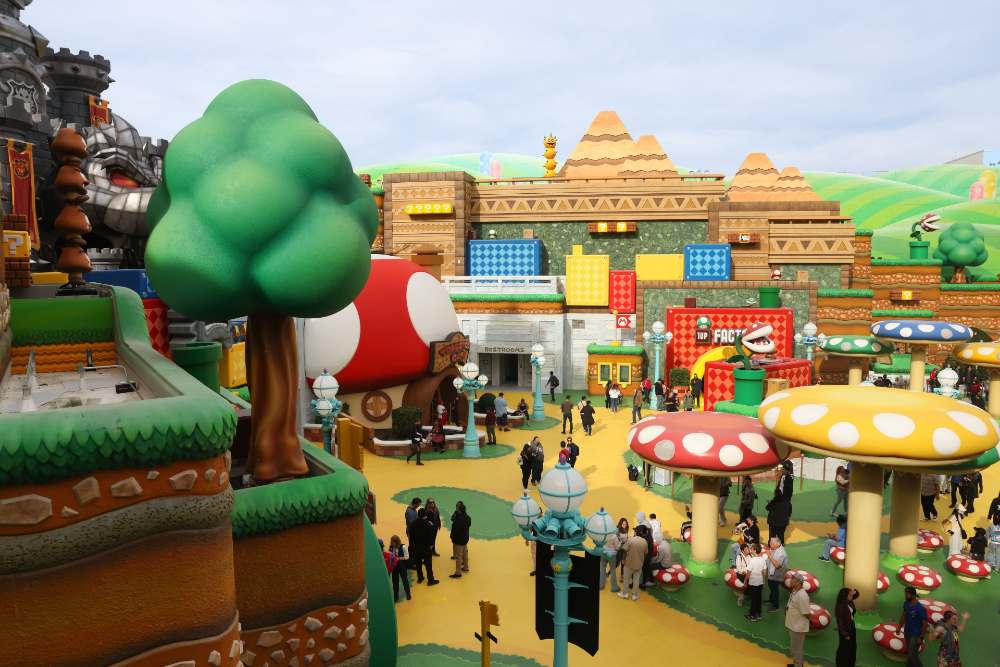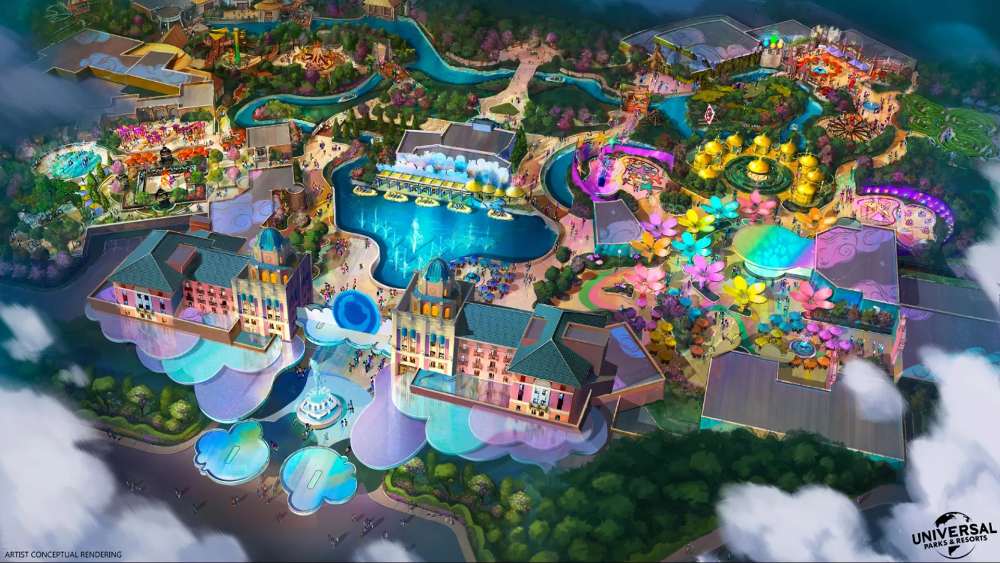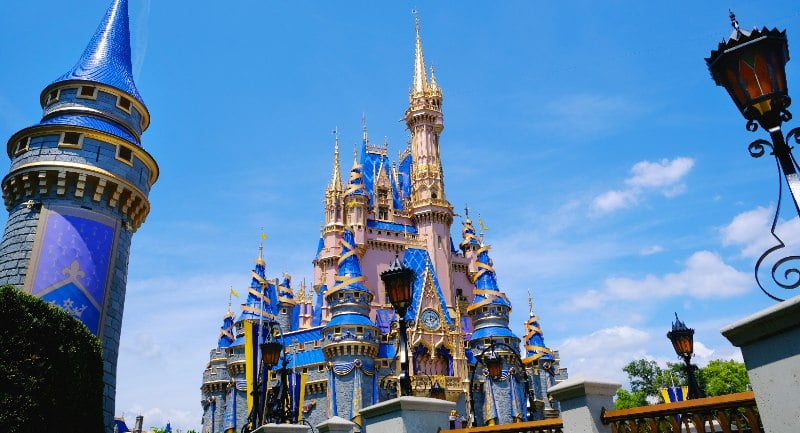Written by Trent Weekes, Senior Producer at Opus Agency
When I was 11, my parents took me to Disneyland. I was beyond excited and it did not disappoint.
Even today, I can still remember everything about that trip – how it felt to walk down Main Street, the hum of excitement, the thrill of the rides and the feeling there was another wondrous thing waiting around the next corner.
That trip sparked a lifelong love of and fascination with theme parks that’s stayed with me ever since.
But what’s kept drawing me back over all these years isn’t just the rides, no matter how much 11-year-old Trent loved them – it’s the way theme parks strip away the everyday and reconnect us with our sense of childhood wonder.

Trent Weekes
As marketers and event producers, we often hammer that wonder out of our work in the pursuit of efficiency, clarity and ROI. Yet whether we’re creating consumer activations or business conferences, our audiences are still people – and people want to feel something real.
That’s where I believe theme parks can teach us a powerful lesson: how to design experiences that don’t just communicate, but truly connect.
We know that in both consumer and B2B contexts, audiences respond better to experiences that are immersive, emotionally engaging and thoughtfully designed. Just as a park visitor steps into a fully-realised world, attendees at a conference or activation notice the details, the flow and sense of narrative.
The difference is (and I’m sure we’d all agree) – theme parks are at the forefront of it.
That’s why I think we have a lot to learn from them. By examining how theme parks strategically craft every detail to engage, surprise and involve their audience, marketers and event producers alike can build brand experiences that don’t just entertain but leave a lasting impression.
Worldbuilding for a competitive edge
Since the early ‘90s, one global trend has continued to deliver a competitive edge for theme parks: worldbuilding.
Walt Disney pioneered the concept in 1955 with Disneyland. Universal Studios has more recently taken on the mantle and become a leader in worldbuilding – The Wizarding World of Harry Potter being a prime example. It set a new standard in experiential storytelling and sensory integration, engaging all five senses in order to build the full experience.
As impressive as it is, The Wizarding World of Harry Potter is just one part of Universal’s Epic Universe Orlando, which comprises different lands built around a central hub and accessed through their own themed portals. These portals are visually and spatially designed to block sightlines so you’re fully immersed in your self-contained universe, experiencing its weather, lighting, soundscape and story logic.
What we can learn from this theme park is that building a world that truly resonates with audiences requires more than visual spectacle: it demands a deep understanding of the IP, a commitment to authenticity, narrative consistency and a willingness to take creative risks.
This is our cue to move beyond the surface of event design and consider the deeper, layered experience we’re offering our audience. Theme parks are a reminder that more signage isn’t always better wayfinding and more content doesn’t necessarily create more engagement.
Instead, we should be asking ourselves: Are we designing environments that spark curiosity, guide intuitive exploration and reflect the true personality of the brand, in the same way IP defines the personality of a themed land?
We’ve already seen ripples of this in our industry. Events like the Salesforce World Tour show how principles of world-building can be applied to great effect – where the environment itself becomes a form of storytelling, drawing people in visually, guiding behaviour organically and encouraging deeper engagement.
Movement matters when it comes to immersion
Something marketers and event producers shouldn’t overlook is the importance of movement – this is tied directly to building meaningful guest interactions and can create a sense of kinetic immersion.
Take Super Nintendo World, another land within the Epic Universe park, as an example. The entire land is constantly moving – coins spin, blocks bounce and guests wear Power-Up Bands to interact physically with the environment. You’re not passively observing; you’re part of the land and can affect the environment just like Mario in the game.

Super Nintendo World
A local example of this is Dreamworld’s recent addition, Rivertown, which has also embedded movement into the landscape. Through its roller coasters, the area feels alive, dynamic, and interconnected – a clear example of how layered motion supports the world’s believability.
In events, kinetic design doesn’t need to mean rollercoasters or giant animatronics. It can be as simple as layered lighting, dynamic stage transitions or activations that respond to audience participation.
The point is to design spaces that feel alive, where audiences aren’t just observers but co-creators of the moment.
After all, movement, when done right, is a shortcut to memorability.
Building brand affection through more focused experiences
In 2023, Universal Destinations & Experiences announced a suite of new projects as part of its new ‘feeder attraction’ strategy.
The first is Universal Kids Resort in Frisco, Texas. The resort will be smaller in scale and lighter in technical complexity compared to Universal’s sprawling flagship parks – meaning significantly lower investment.
It will function as an introduction point, opening the brand to a fast-growing regional market currently underserved by the theme park industry. With strategic tailoring to a specific demographic, the goal is clear: to build brand affinity at a young age, and when those families eventually travel, Universal will be top of mind.

Universal Kids Resort map
We can borrow from Universal’s strategy when designing our own event ecosystems.
Rather than relying solely on large-scale campaigns, we can create intimate, localised or digital activations that act as invitations into something bigger. We should instead design experiences that draw together local, regional and global moments in a cohesive journey.
That may mean building demand by meeting our audiences where they are – through strategic previews that guide them toward the full-scale experience or feeder events that extend the impact of larger events by creating a sense of narrative continuity.
You don’t always need a blockbuster moment to make an impact. It’s about designing an ecosystem, not just a one-off.
Nurturing the inner child
One of the most remarkable qualities of theme parks is their ability to connect with and nurture our inner child.
But theme parks are more than just escapism for time-poor adults who spend hours in front of screens – it’s a strategy for deeper connection.
Rather than contributing to the noise, we as event producers have an opportunity to create spaces of stillness, surprise and sensory engagement, where audiences are not just reached, but felt.
Perhaps the question we should ask our clients isn’t just what they want to say, but who they are – and who they were before the world told them to grow up.
By thinking about what an organisation’s “inner child” would be – its essence, play, and purpose – we can craft experiences that don’t just communicate a message, and instead invite their audiences to feel something real.
For marketers, the lesson is simple: don’t just communicate – immerse. Whether it’s through layered storytelling, kinetic energy or thoughtfully scaled experiences, the brands that stand out will be the ones that create worlds people want to step into, feel and remember.
By borrowing from the art of theme park design, we can craft moments that leave a lasting impact – leaving audiences not just entertained, but truly moved.

